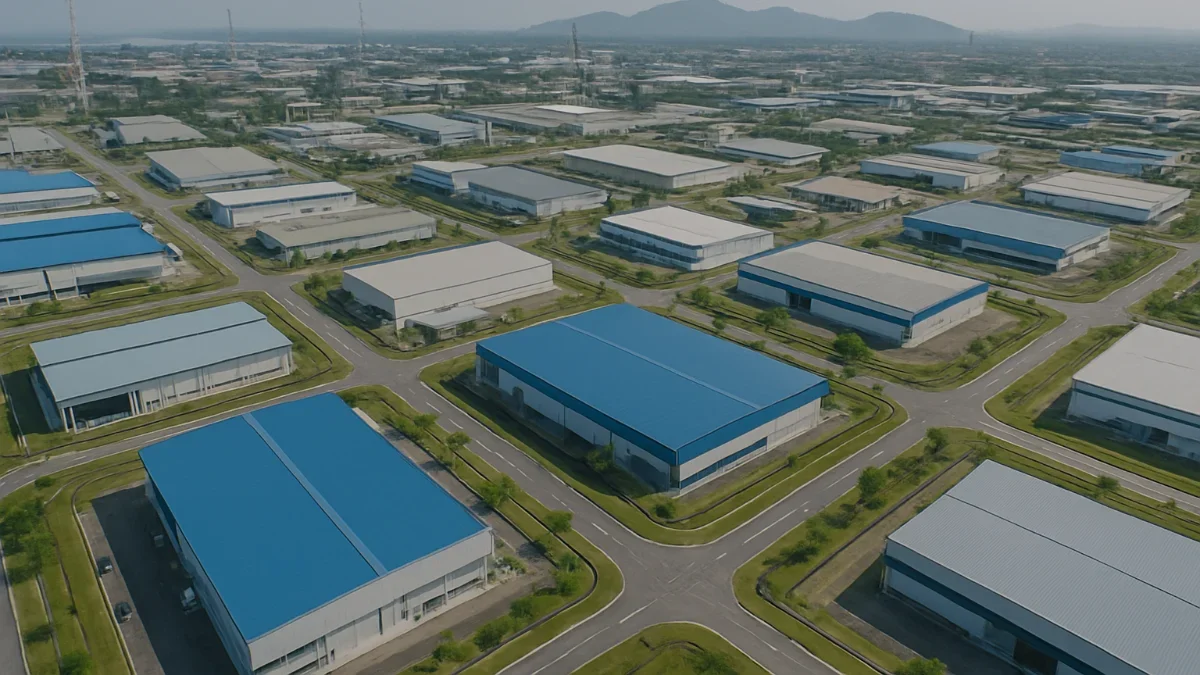Smart industrial parks are transforming Malaysia’s manufacturing and logistics sectors. With automation, green energy, and digital connectivity, these next-gen hubs represent the future of industrial development.
The Rise of Smart Industrial Parks in Malaysia: Are We Ready?
As global industries embrace digital transformation, Malaysia’s industrial landscape is evolving with a new wave of smart industrial parks. These parks integrate Industry 4.0 technologies, automation systems, renewable energy, and sustainable infrastructure to support future-ready manufacturing, warehousing, and logistics.
But is Malaysia prepared to scale up and fully adopt these innovations? Let’s look at the key factors fueling the rise of smart industrial parks — and the challenges ahead.
1. Embracing Industry 4.0 Technologies
Smart parks are being built with the integration of IoT (Internet of Things), automated logistics, real-time monitoring, and predictive maintenance. This allows manufacturers to optimize production, reduce downtime, and respond to market demands more efficiently.
Example: Sensors in smart warehouses help track inventory, automate temperature control, and optimize energy use.
2. Focus on Green and Sustainable Design
Malaysia is witnessing a growing trend of eco-friendly industrial zones. These parks feature:
-
Solar panel installations
-
Rainwater harvesting systems
-
LED and smart lighting
-
GreenRE or GBI certified buildings
Such designs not only reduce carbon footprints but also attract ESG-conscious tenants and MNCs.
3. Examples of Smart Industrial Zones in Malaysia
-
Elmina Business Park (Selangor): Emphasizes smart-ready infrastructure with sustainability features.
-
Batu Kawan Industrial Park (Penang): Home to major semiconductor and electrical MNCs, it’s adopting IR4.0 practices.
-
Techpark@Enstek (Negeri Sembilan): Focuses on food manufacturing and biotech with advanced utility systems.
These developments show a shift from traditional industrial areas to digitally connected, clean, and sustainable environments.
4. Digital Infrastructure as a Backbone
A smart park isn’t complete without strong connectivity. The Malaysian government is pushing for:
-
5G coverage in key industrial zones
-
Data centers and cloud integration
-
Smart grid and utility management systems
This ensures real-time data exchange, efficiency in operations, and better tenant experience.
5. Energy Efficiency and Resource Optimization
Energy costs remain a concern in manufacturing. Smart parks adopt:
-
Demand-based energy control systems
-
Energy management dashboards
-
Renewable sources integration (solar, biomass)
This results in lower operating costs and better long-term ROI for developers and investors.
6. Government and Private Sector Support
Agencies like MIDA, MITI, and Invest Selangor are offering incentives for companies investing in automation and smart factory setups. Developers are also investing in digital master plans to future-proof their industrial offerings.
Challenges Ahead
While the momentum is promising, some hurdles remain:
-
High cost of infrastructure upgrades
-
Limited awareness among SMEs
-
Skills gap in advanced tech implementation
Bridging these gaps will require collaboration between government, private sector, and education providers.
Final Thoughts
Smart industrial parks are not a distant future — they are already here in Malaysia, reshaping the way industries operate. From Selangor to Penang, forward-looking developers are building connected, efficient, and sustainable industrial environments.
The question is no longer if Malaysia is ready, but how fast we can scale adoption across all regions.
Contact us Call Kenneth 017-380 9993 Or WhatsApp our team directly for the latest availability



